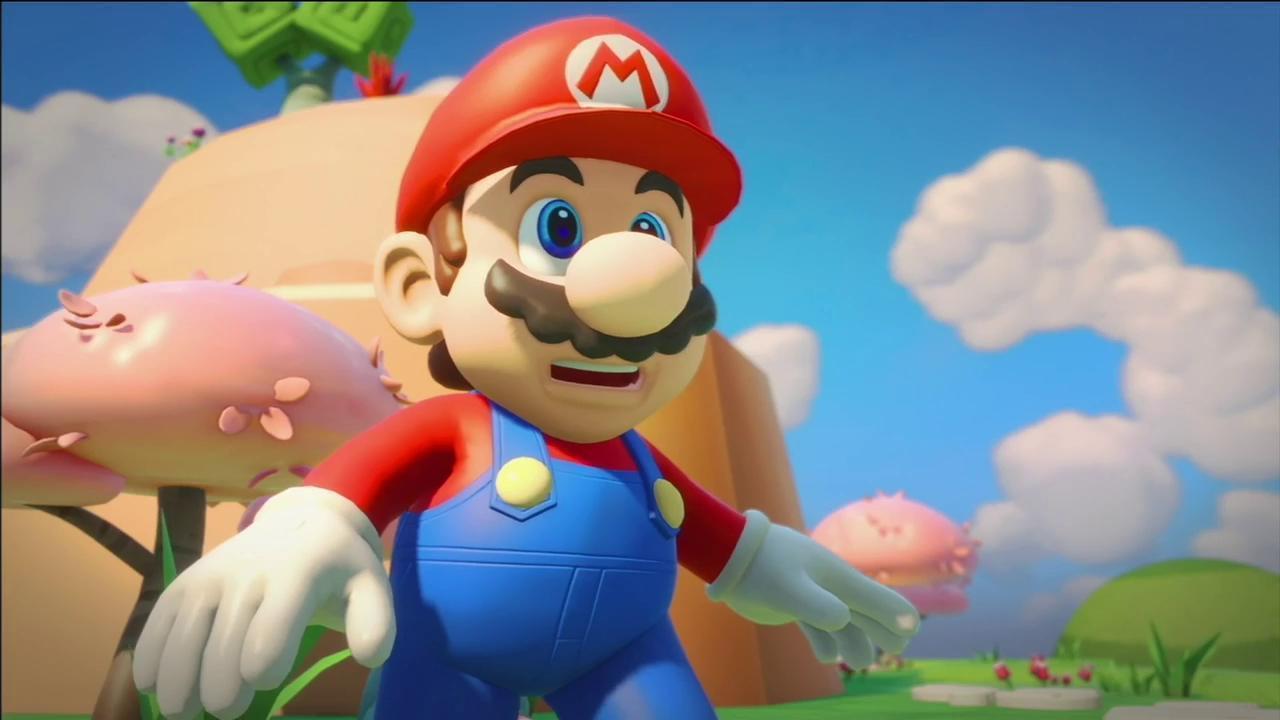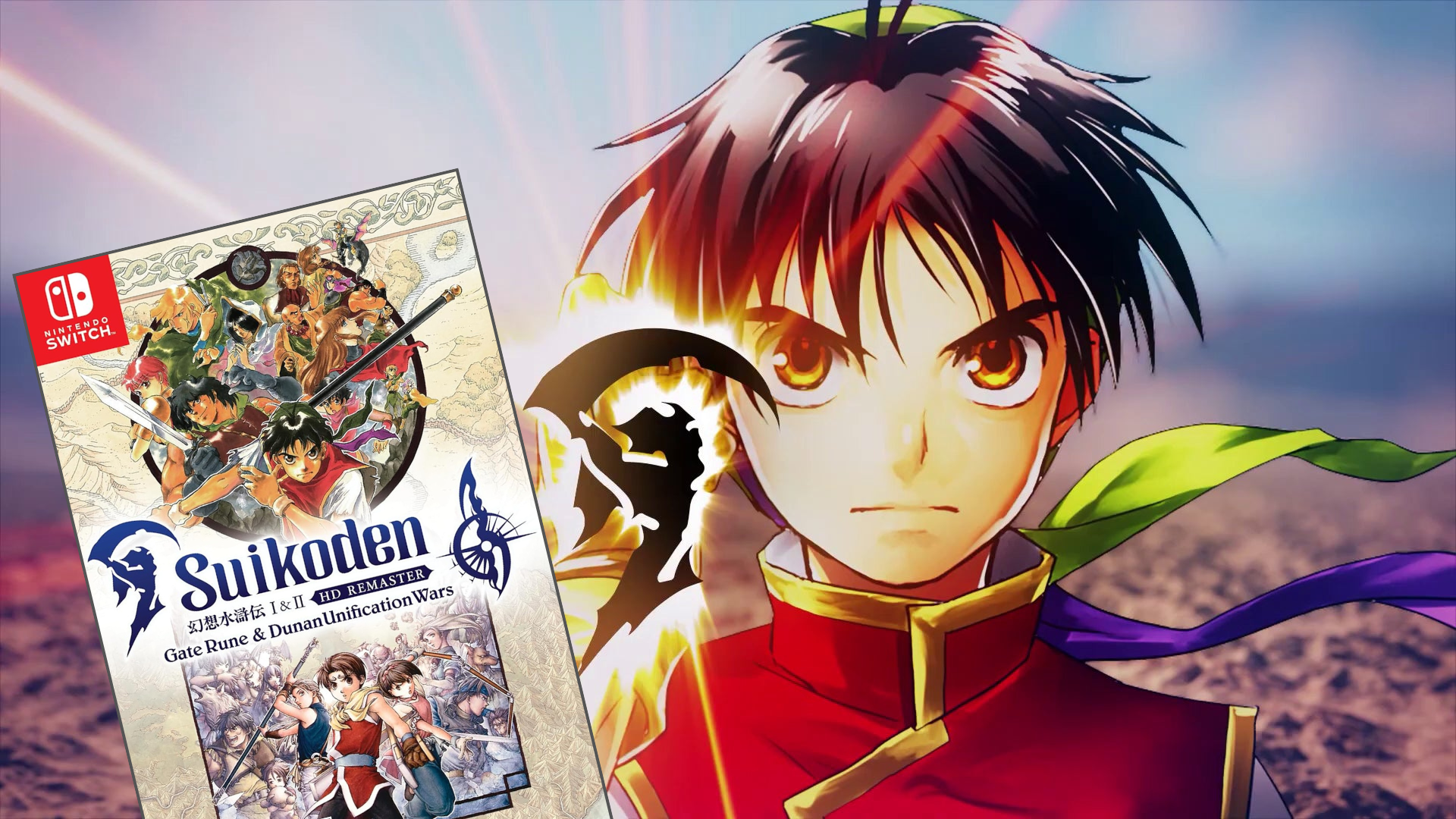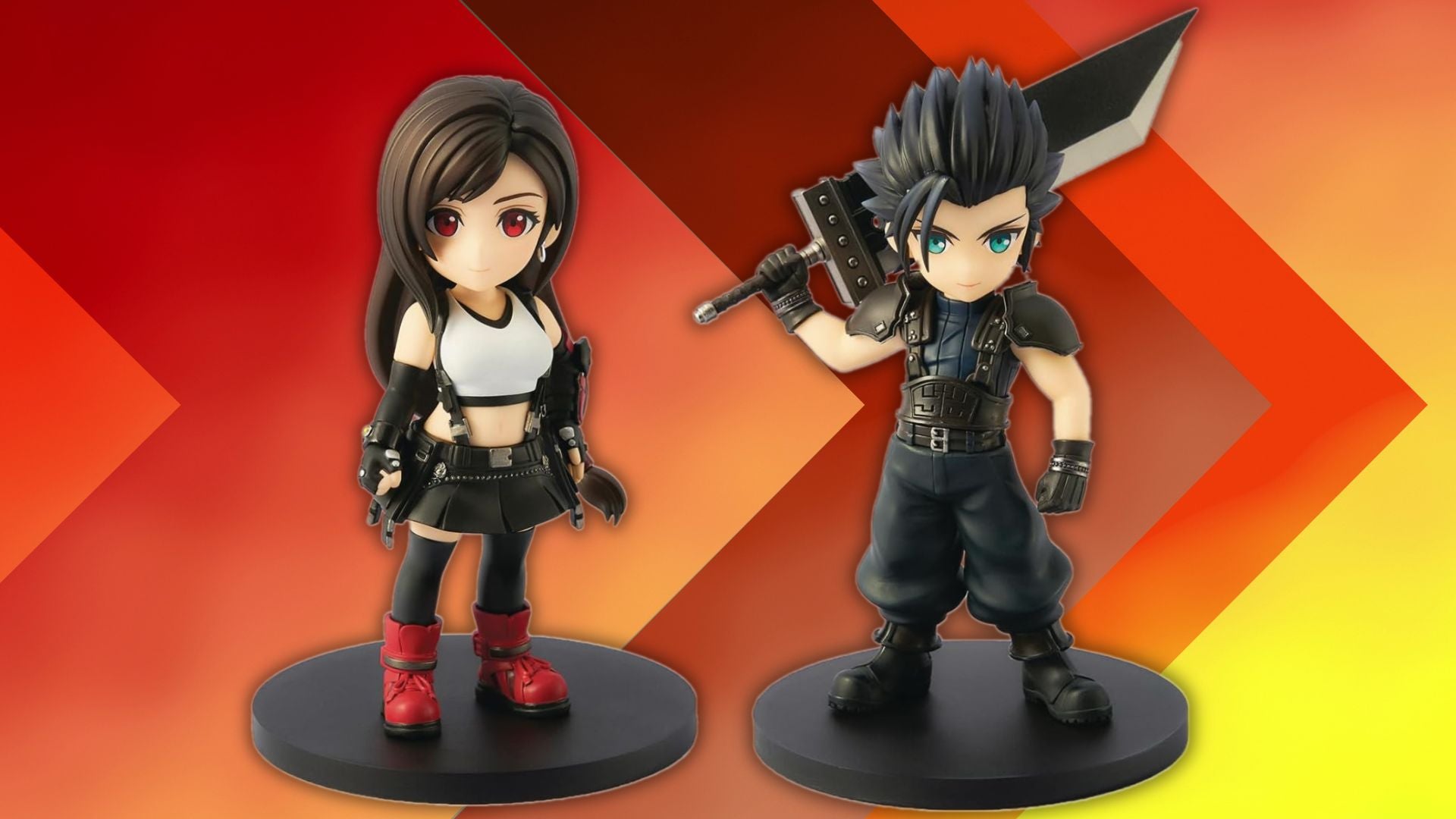Valve has officially announced the Steam Deck OLED, a new iteration of the popular handheld device featuring an OLED screen, improved battery life, and more.
Ahead of the announcement, IGN sat down with Jeremy Selan and Jay Shaw, two designers who worked on the newly announced OLED model. We asked both designers about making the Steam Deck OLED, including the decision to keep the performance the same as the launch model, and why Valve decided to make an OLED model instead of a true successor to the Steam Deck.
Read on for our full Steam Deck OLED interview with Valve below. If you want to learn more about the Steam Deck OLED, check out our Steam Deck OLED review, as our article on how the Steam Deck OLED stacks up against the Steam Deck LCD and Nintendo Switch OLED.
The Steam Deck OLED launches November 16.
So tell me what we're looking at here. What do you have to show off today?
Jay Shaw, Designer: So today we're looking at Steam Deck OLED. We're looking at a huge update to the Steam Deck line. We've got HDR OLED display. We've got improved battery life. We've got a bunch of improvements across the board, but mostly we're looking at the OLED display.
How did you improve the battery life while dealing with a brighter screen and higher refresh rate, both of which should make the battery shorter?
Shaw: Yeah, there's two big parts to that. One, OLED is considerably more power efficient. Just the architecture of OLED is that, so the performance is going to be better. OLED also takes up a smaller footprint inside the device, so we were able to actually use a slightly larger battery in there without sacrificing weight or ergonomics or anything else. We also have some efficiencies on the APU side. It's gone from seven nanometers down to six nanometers, so we were able to get some power efficiencies there in order to have the battery last longer.
So is there any performance difference between this and the basic original Steam Deck? What are we calling it now?
Shaw: Steam Deck OLED. So we've got Steam Deck OLED and Steam Deck LCD. In terms of performance, we were not targeting a new performance benchmark. You are naturally going to benefit from any of the efficiencies that are happening here, but we are targeting the exact same performance.
So why do this instead of the Steam Deck 2?
Shaw: It's a great question. We are interested in the Steam Deck 2 once we believe that there is a generational leap available to us in terms of performance. We don't see that yet, so we are not looking at Steam Deck 2 yet. As time goes on, of course we'll continue to innovate and look at different possibilities. But this was always the Steam Deck that we dreamed of making. We really wanted to have an OLED display. We really wanted to have, all of the things that we have now as really kind of the definitive first-generation Steam Deck. Yeah.
You say this is the one you've wanted to make. When did you start making this version versus the original?
Jeremy Selan, Designer: Yeah, we started on this immediately after shipping the first. In fact, even the display technology for the HDR display, we kicked that off prior to even having shipped the first. So it's been over two years now that we've been working on this.
And you mentioned a little bit about that tech. Give me some specifics of the benefits of OLED and what this screen is specifically capable of doing.
Selan: Yeah, so OLED is really incredible and the display is capable of doing really amazing, unique things. So for brightness and contrast ratio, that's probably the first thing that customers and users would think about. On the high end, it could get up to over a thousand nits of peak brightness when used in HDR mode. And that same brightness capability allows you to have very high brights, over 600 nits even when playing your traditional catalog.
On the low end, you have contrast ratios of over a million to one. And then on top of that, one of the most impressive parts of OLED is you can do that with pixels that are very nearby each other. So most commonly for gaming monitors where they're very bright displays like this one, they often use them with spatially modulated backlights, where you can't have very bright white next to very black blacks. On this display you can, so you have very, very high clarity where you can have, they call it a simultaneous contrast or ANSI contrast where you have very bright pixels next to very dark pixels and you can see that all with really high fidelity.
Shaw: As you can see, Jeremy works on display technology.
Selan: The color gamut are also amazing. I mean, there's a lot of axis, the motion rendition. I can keep going.
Keep going if you want.
J. Selan: Yeah, the color gamut is also very impressive. It has 110% of the DCIP three-color gamut. And for people who are familiar with different color gamuts, the SRGB one for SRGB displays, which is the REC 709 gamut is one of the most common ones that people use for gaming. The DCI-P3 is more commonly associated with very high-quality displays or digital cinema. And this display is actually capable of 110% of the DCI-P3 color gamut. So it can recreate many more colors than people are accustomed to seeing on their traditional displays.
What are some of the other improvements under the hood beyond just the OLED screen?
Shaw: We went over it, but some of the other improvements are of course improved battery life, 30-50% more battery life, which we feel is definitely a headline of this. It's a portable device, so you want to get as much battery life as you possibly can. It does run cooler.
We've improved all of the thermal technology inside. We've got a larger fan, we've got a larger heat pipe, the thermal pathways have been improved, so the device will run cooler. Which is nice, that also means that you're going to hear the device a little less. It's much quieter.
The haptics are greatly improved in the device. The thumbsticks are improved. We've got a new Wi-Fi 6E module in here. So this is capable of 6GHz Wi-Fi. We've got a brand new Bluetooth module inside and that's separated from the Wi-Fi module. So you've got more reliable Bluetooth.
Selan: Storage has gone up.
Shaw: Oh right. Storage, double the storage. So up to 1TB now of storage in here, which is obviously twice what we were able to offer before. So we think that's really good. The list goes on and on. What did we miss?
Selan: I think just the value overall because the prices are very similar.
Shaw: And the price, we really endeavored to keep the price basically the same. So for the high end, the mid-tier and the low end. The low end actually, that's the lowest price we've offered so far I believe. But yeah, we tried to keep the prices almost exactly the same. So huge bump in everything with the price staying the same.
Was there anything that you wanted to get into this update that just the tech still isn't there?
Shaw: Is there anything?
Selan: No.
Shaw: This update is it.
Selan:This is everything on our immediate wishlist that we'd want it to do.
Shaw: Right. And again, there will be generational technological upgrades that happen later on down the line, but we're not there yet.
Selan: Technology is always a moving target, and just because something is available today, it often takes 12, 18, 24 months to put them into products. So there's nothing that was available on a timeframe to make it into this product that we wish we could have done.
Shaw: Right.
How far off would you say is Steam Deck 2, if you had to... I know it's a moving target in estimate, but if you had to guess.
Shaw: I don't know. It'll be a while. I think it'll be quite a while. We don't have any kind of set date. I think we're going to wait for the technology to present itself in a way that we find interesting and for the team to really want to make that leap. We're very, very, very proud of this version of Steam Deck and this is it. This is the one that we're the most happy with and we think customers will be too.
So we're thinking about Steam Deck 2 at all times, but I think we're so satisfied here that this is really the kind of high end of what we wanted to do. One thing we did get in was, you might talk about it separately, but we were able to do that limited edition with the fun translucent shell. I've been waiting for that the whole time. That was my number one request is can we please, please make a spicy version.
Have you thought about doing other colorways beyond that, the translucent?
Shaw: Absolutely. We've experimented with and thought about other colorways and we'll see what customers, how they feel about this limited edition version and we'll see what we can do going forward. No promises, but the team that works on that is constantly experimenting with new colorways in some really fun ways, new materials and whatnot.
So the resolution is staying the same, is that correct?
Selan: Correct. Yeah. So the resolution is still going to be 1280x800. 3 subpixels per pixel. So there's a variety of displays. Some of them use two subpixel patterns, but this is a full resolution at 1280x800. Though the frame rate of course is now capable of going all the way up to 90Hz.
Shaw: We found that keeping that resolution really hit the sweet spot in terms of performance versus visual fidelity. Games just look absolutely amazing on this, but we're not pushing the resolution in a way that we would now need to change a bunch of the device to keep up with it. We want you to be able to play your games without any kind of hitching. We want you to be able to get the most battery life out of it and whatnot.
Do you have an idea of how many Steam Deck units have shipped so far?
Shaw: We do. We're not disclosing that at this time, but we can very confidently say we're quite happy with the results so far.
It's okay, you can tell us. Pay no attention to the camera.
Shaw: More than one.
More than one?
Shaw: More than one.
At least one?
Shaw:
Less than a zillion, more than one.
Was there a conversation about bumping the resolution?
Selan: Absolutely, yeah. Because there are other devices that we've seen that have done that and it really comes down to the trade-offs for the product for battery life versus quality of the image and the quality of the game. We know a lot of people play pixel games and want to see those exact pixels on the display. So it was very much a conversation, but we're very happy with where we landed.
Did you consider changing the form factor at all? I know this device is lighter because of the improvements on the internals, but did you discuss changing the form factor at all?
Shaw: Not for this generation. Not at all. That was one of the things we really wanted to do was keep the form factor. We're happy with it, we found the customers are really happy with it. So potentially way down the line if we find some interesting way in which the form factor should change, I'm sure we would look at that, but we definitely weren't looking at it for this release.
When we were here the first time, we talked about the suspend resume feature and there was kind of a hint at maybe getting a suspend resume to work cross-platform where you could suspend a game on your PC, pick it up just straight away, similar to how Quick Resume works with Xbox. Any advancements there? Anything that you can talk about?
Shaw: I don't know that we have anything to share today on that. It's a harder thing to do on a PC. Because with Steam Deck, we're lucky in that we actually can hook into the operating system because we make the operating system.
So it's easier for us to do things like have the hardware, a button, suspend and resume. When we're talking about PCs. It just gets a little trickier. You don't have that level of control over the hardware and I know that that's constantly being looked at and worked on, but I don't know of any advancements yet.
Selan: Yeah, it's also worth noting, I believe we've made resume faster on this device.
Shaw: That is true. That is absolutely true. Resume is faster on this device. Yeah, we were able to do that. Was it purely through software, right?
Selan: I'm not sure.
Shaw: Okay. Not 100% sure. But we do know it works because as a customer of this device, I have noticed that my resume is considerably faster. It wasn't slow before, so it was kind of nice.
Tell me about the new case too.
Selan: Oh, the case is awesome.
J. Shaw: So there's one more thing...This looks a little different than the case you're used to. The reason for that is that we were able to make a removable inner shell. We've got the case, and then inside of that case is a removable inner shell for easy pickup and travel.
That was the ID team just really playing around with the case and figuring out the best thing to do. And they came around and showed this to everybody and said, "Hey, we've got an idea. What do you think of this?" And we all went, "O, that's amazing. I only want to use this case. That's great. We did want a thinner case. Thank you so much."
So we think customers will be excited about that too. That was one of the requests that we paid attention to online.
Bo is the Executive Editor of Tech at IGN. Taylor is a Reporter at IGN.






